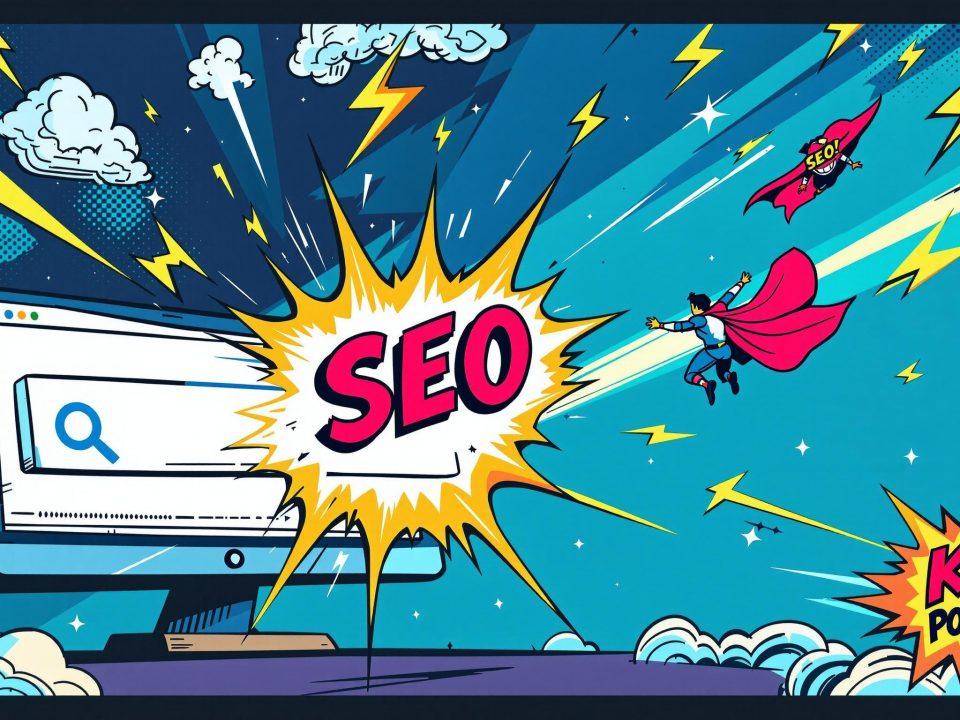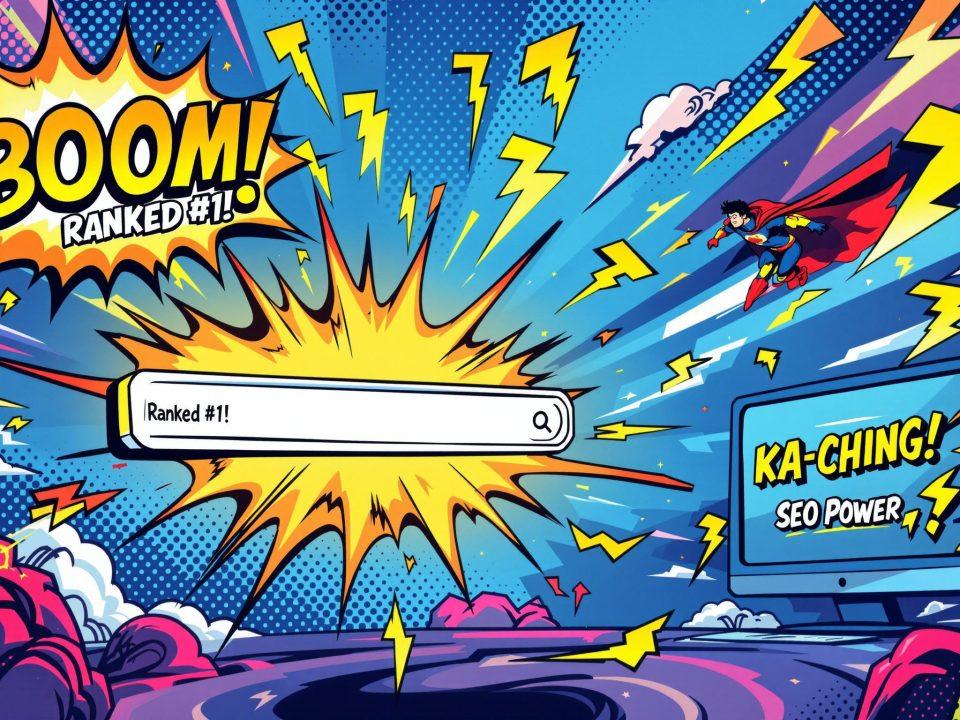Crafting effective meta descriptions is like setting the stage for a play. If your description is dull or doesn’t accurately represent the show, no one will buy tickets. This rings true for marketers tackling SEO for their businesses. Learning meta descriptions best practices is crucial for any marketer doing DIY SEO.
When people search online, a good meta description convinces them to choose your link from a page full of search results. This can lead to higher rankings, but more importantly, meta descriptions impact being found online and getting people to click to your website.
What is a Meta Description?
Think of a meta description as a concise blurb, usually around 150 characters, that summarizes a webpage’s content. It lives in a page’s HTML code, although most content management systems have dedicated fields for editing it. While it won’t directly affect your ranking in search results, a compelling meta description can influence your click-through rate (CTR).
Why Meta Descriptions Still Matter
It’s true that, as Google announced way back in 2009, keywords in meta descriptions don’t directly affect rankings. And, yes, research shows that Google rewrites them about 70% of the time.
But don’t write them off yet. Learning to write meta descriptions that are effective is still very much a relevant part of SEO. Firstly, even though Google might use its own version, your carefully crafted meta description will still show up in some search results. This gives you some control over your page’s narrative and first impression.
Think about it, you only have one shot to entice someone to click. Why leave it entirely to chance? Meta description optimization is important, and studies suggest that about 25% of top search results don’t have a meta description.
Plus, your meta description acts as the summary when your webpage link is shared on social media. A captivating summary can spark curiosity and lead to more shares and clicks. You can use a meta description tag to set this for each page on your website.
Meta Description Best Practices: 7 Tips for More Clicks
While you can find free SEO tools out there, following a few guidelines ensures your descriptions pack a punch:
1. Character Count Matters
Though Google has been known to tweak meta description length over the years, aim for around 155 characters. Anything longer is likely to get cut off in the search results, leaving you with a potentially awkward and incomplete snippet.
While meta descriptions can be a bit longer than before, Yoast SEO suggests a good range is 120-155 characters to avoid truncation on the results page. You can use a free meta description checker like the one on To The Web to preview how yours will look on a search results page.
2. Know Your Audience (And Search Intent)
Before writing, understand what someone searching for a particular term is actually looking for. You can research their search intent by using tools like The HOTH Keyword Planner, Google Trends, or Google Search Console.
Are they looking for information, a product to buy, or a specific website? Tailor your description to their intent by highlighting what makes your page the best answer. Use compelling language to pique their interest.
3. Weave in Relevant Keywords
While keywords alone won’t boost rankings, a natural incorporation can improve visibility. After all, when users scan search results, Google often bolds relevant keywords in meta descriptions.
This subtle visual cue helps users decide if your page matches their needs. You can discover suitable primary and secondary keywords by using a free SEO tool like Google’s Ads keyword planner and perform keyword research. Adding a meta description is a good idea to increase CTR from users searching for these keywords.
4. Treat it Like an Ad Copy
With a small character limit, you need to be persuasive and captivating. Think about using action verbs and phrases that compel a click, similar to effective ad copy. If applicable, include a clear call-to-action to tell them exactly what you want them to do.
5. Focus on Value
Rather than just describing your page, focus on how it solves a problem, provides a solution, or offers valuable information. Make it clear how clicking your link benefits the user.
6. Each Page Gets Its Own Description
Never, ever duplicate descriptions. Duplicate meta descriptions won’t serve users, and they look spammy to search engines. Craft a description that truly reflects the individual page’s content. Remember, a focused, accurate description is better than a generic, repetitive one.
7. Don’t Overstuff with Keywords
Meta descriptions, like many other aspects of SEO, have been prone to abuse. In fact, in 2009, Google clearly stated that excessive keyword stuffing won’t help you rank. The key here is to be helpful, not manipulative.
Focus on natural, reader-friendly language and only include your keywords in a way that enhances understanding. If you find yourself trying to add meta too many times on a page, it’s time to step back and refocus on creating naturally-flowing content.
The Importance of Testing
Like most things in marketing, testing your meta descriptions over time is a good idea. Experiment with different variations in wording, calls-to-action, or even lengths to see what resonates most with your target audience.
Monitor your analytics for CTR changes and keep refining. Even small changes can make a big impact. Remember that tools such as the On Page SEO Checker from Semrush will tell you whether Google has changed the meta descriptions you provided. Use the insight they provide to continue optimizing.
What About the Meta Title?
Both meta titles and meta descriptions help searchers understand a web page’s purpose. They act as invitations to click. You could compare a meta description to a mini-ad copy for a specific page.
Crafting an enticing and effective meta description can result in a higher CTR for that specific page, driving valuable organic traffic to your site. The role they play can be best understood through a concept known as click-through rate. According to Backlinko, pages with a meta description have a 5.8% higher CTR than pages without a meta description.
Think of the title tag as your page’s main headline, while the meta description provides a more detailed preview. Though there isn’t a fixed character limit, sticking to about 600 pixels for your meta title ensures it displays properly in search results, as the study conducted by Moz suggests.
Google likes to change things up, and even with titles it has the freedom to choose either a page’s meta title or an H1 heading tag to use on its search engine result page. Google has been tweaking the meta title since 2012. The W3C has set clear expectations for these elements:
| Element | Key Qualities (W3C) |
|---|---|
| Meta Description | Short and Accurate, Human Readable |
| Meta Title | Relevant and Unique |
Remember to write a unique meta description for each page, as this is a best practice for content writing in general. Google Search Console is an invaluable SEO tool that can be used to learn more about best practices for writing meta descriptions.
Real-World Case Study
A small, local bakery decides to ramp up its SEO. They begin focusing on meta descriptions. Let’s say their most popular item is sourdough bread. On their “Sourdough Bread” page, they originally had a meta description that simply said, “Delicious sourdough bread baked fresh daily.”
While accurate, it’s not very specific. Using keyword research, they discover terms like “artisan sourdough,” “San Francisco style sourdough,” and “organic sourdough” are frequently searched in their area.
They re-write their meta description to be: “Craving authentic, San Francisco-style sourdough? Our bread is baked with organic ingredients and ready for your next meal. Order online or visit our shop.”
This updated version is much more targeted to search intent and keywords, leading to a significant increase in both search visibility and click-throughs from relevant users.
FAQs about meta descriptions best practices
What is the best practice for meta description?
There are a few best practices for meta descriptions, all aimed at providing accurate summaries of page content, attracting readers, and standing out on the search results page. The length should ideally be between 120 to 155 characters, although sometimes this can vary.
Using Semrush’s Site Audit tool to spot duplicate descriptions on your site can make a huge difference for your website’s overall SEO.
Which of the following are best practices for writing a meta description?
You can always check out Google Search Central documentation for helpful tips on this. You want to entice a reader to click through to your page by making the meta description sound informative and enticing, while sticking to the ideal character length.
How long should meta description be in 2024?
Experts suggest keeping them around 155 characters or less, which typically translates to roughly 920 pixels. If you go over this limit, search engines will often truncate it. Use a meta description checker like To The Web to get visual confirmation.
What is the ideal length of a meta description?
This is debatable. Google has been changing meta description character length for a while. Following best practices means keeping meta descriptions to about 155 characters, although this is really a guideline to go by.
This helps you stay within pixel constraints and present the best possible version on the search engine result page. Keep in mind, what is actually displayed may depend on factors like the user’s device, search query, and whether any terms are bolded in the results.
Conclusion
Meta descriptions might seem like a small detail, but they’re an essential ingredient for effective SEO, serving as “mini ads” for your content. Think of meta descriptions best practices as guideposts, not rigid rules. Test and iterate as you continue to learn what attracts clicks and encourages website traffic.







